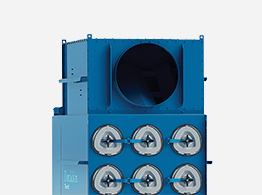The publication of NFPA 660, "Standard for Combustible Dusts and Particulate Solids (2025)," in December 2024, represents an advancement in the realm of industrial safety. This standard is the result of a deliberate consolidation effort undertaken by the National Fire Protection Association (NFPA), aimed at harmonizing, and unifying the existing guidance pertaining to combustible dust hazards.
Historically, industries handling combustible dusts have been required to navigate a complex landscape of disparate NFPA standards, each addressing specific materials or industry sectors. This fragmented approach created the potential for inconsistencies in safety practices. NFPA 660 addresses this challenge by consolidating six key standards (NFPA 61, 484, 652, 654, 655, and 664) into a single, comprehensive document.
This consolidation yields several benefits. By integrating core principles and industry-specific requirements, NFPA 660:
- Promotes a uniform approach to combustible dust management, supporting consistent application of safety protocols across diverse sectors.
- Provides easy access to multiple standards; allowing process owners to compare guidance across multiple industries with one document.
- Progresses safety by integrating best practices from the preceding standards and implementing updated terminology.
NFPA 660 is designed to provide a more effective and user-friendly framework for the management of combustible dust hazards, contributing to safe working environments. While the standard has been published, it is important to acknowledge that local adoption and enforcement will require time. You will likely continue to see dated standard references in the market.
A notable feature of NFPA 660 is the alignment of fundamental content across industry-specific chapters. General content noted in Chapters 1 - 9 is now standardized across all industry-specific chapters. If guidance deviates from the general chapter, one can find the deviation in that same section of the industry-specific chapter.
For example, Chapter 24, previously NFPA 664, provides wood-specific requirements that build upon the general requirements in Chapters 1-9. While Chapter 9 provides general dust collection guidance for combustible dust applications, Chapter 24.9 dives into the details pertaining to dust collection systems unique to woodworking operations and wood dust.
Furthermore, Chapter 10 introduces a significant new element: the requirement for documented Emergency Planning and Response strategies. This chapter mandates that facilities develop and implement plans outlining procedures for responding to fires, explosions, and other combustible dust-related emergencies. This addition reflects a more comprehensive approach to combustible dust safety, recognizing that prevention must be complemented by robust emergency preparedness. This chapter underscores the importance of mitigating the consequences of incidents through proactive planning.
In addition, Donaldson has created a combustible dust roadmap to help process owners navigate combustible dust challenges. This roadmap is a high-level summary of mitigation strategies that can be considered if combustible dust is produced or handled in your facility. The final selection of dust collectors and risk mitigation strategies should be based on the outcome of a Dust Hazard/Process Hazard Analysis and reviewed with an authority having jurisdiction.




